
Epyaxa lucidata is a species of moth in the family Geometridae. It is endemic to New Zealand.

Aponotoreas is a genus of moths in the family Geometridae erected by Robin C. Craw in 1986.

Helastia is a genus of moths in the family Geometridae erected by Achille Guenée. It is considered by some to be a synonym of Larentia. This genus was redefined and described in 1987 by Robin C. Craw. This genus is endemic to New Zealand.

Paranotoreas is a genus of moths in the family Geometridae. It was described by Robin C. Craw in 1986.
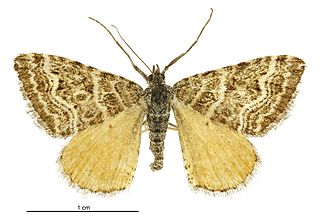
Xanthorhoe bulbulata is a species of moth in the family Geometridae. It is endemic to New Zealand. It is classified as critically endangered by the Department of Conservation.

Asaphodes imperfecta is a moth in the family Geometridae. It is endemic to New Zealand and is found in the southern part of the South Island. The species inhabits low lying swampy native forest. The host plants of the larvae of this species is unknown. The adults are on the wing in December and January. It is classified as critically endangered by the Department of Conservation.

Gingidiobora nebulosa, the gingidium looper moth, is a moth in the family Crambidae. It is endemic to New Zealand. This species has been classified as Nationally Vulnerable by the Department of Conservation.
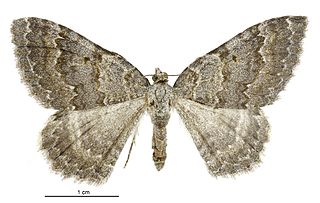
Gingidiobora subobscurata is a species of moth in the family Crambidae. It is endemic to New Zealand. This species has been classified as "At Risk, Declining" by the Department of Conservation.

Asaphodes chlorocapna is a species of moth in the family Geometridae. This species is endemic to New Zealand and can only be found in the Chatham Islands. The larvae of this species consume the leaves of Muehlenbeckia plants. Adults are on the wing in January. This species is classified as "At Risk, Relict'" by the Department of Conservation.

Helastia angusta is a moth of the family Geometridae. This species is endemic to New Zealand. It is classified as "At Risk, Relict'" by the Department of Conservation.

Helastia clandestina is a moth of the family Geometridae. This species is endemic to New Zealand. It is classified as "At Risk, Relict'" by the Department of Conservation.
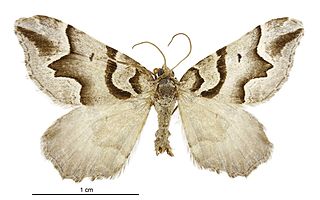
Helastia expolita is a moth of the family Geometridae. This species is endemic to New Zealand. It is classified as "At Risk, Relict'" by the Department of Conservation.
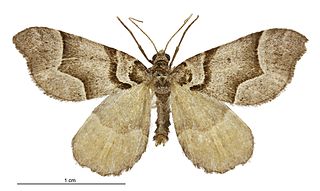
Helastia siris is a moth of the family Geometridae. This species is endemic to New Zealand. It is classified as "At Risk, Relict'" by the Department of Conservation.

Asaphodes citroena is a species of moth in the family Geometridae. This species is endemic to New Zealand and has been collected in Westland. It inhabits native forest and scrub and has also been collected in open spaces along riverbeds. Adults are on the wing in December and January.

Asaphodes declarata is a species of moth in the family Geometridae. This species is endemic to New Zealand and has been observed in the southern parts of the South Island. This species prefers open tussock grassland habitat amounts beech forest and in mountainous terrain. It can be found at altitudes of between 450 and 1750 m. The adults of this species are on the wing from November to March. The moths can vary both in size and, with the female of the species, in markings.

Asaphodes glaciata is a species of moth in the family Geometridae. This species is endemic to New Zealand. This moth has only be found in Westland in the areas near Fox and Franz Josef Glaciers. Adults of this species are on the wing in January.
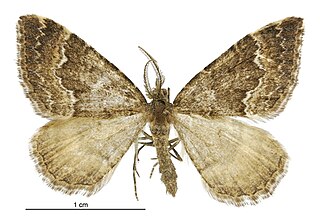
Asaphodes ida is a species of moth in the family Geometridae. It is endemic to New Zealand. This moth can be found in upland or alpine habitat in Canterbury and Otago. Although not classified under the New Zealand Threat Classification system this species is regarded as rare.
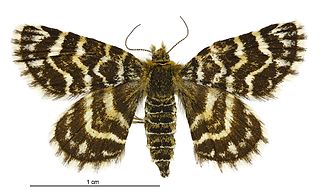
Notoreas hexaleuca is a species of moth in the family Geometridae. This species is endemic to New Zealand.

Notoreas isomoera is a species of moth in the family Geometridae. It is endemic to New Zealand.

Helastia triphragma is a moth of the family Geometridae. This species is endemic to New Zealand. It was first described by Edward Meyrick in 1883 and originally named Cidaria triphragma.




















